I hope you will enjoy this one - Be sure to follow some the links embedded in the article
The Top 5 Black & White Photography Tips
»By Brian Auer • November 5th, 2007
Black & white photography, for me, is one of the most interesting and inspiring aspects of this art form we call our hobby and passion. It’s raw & refined, natural & unusual, bold & subtle, mysterious & open, emotional & impassive, simple & complex, black & white & everything in between. The monochromatic image has been with photography since the beginning, but what began as the only way to capture images has turned into something much deeper.
Interested in stepping-up your black & white game? Here are five tips to get you going in the right direction. If you want to learn more about the actual black & white conversion process in Photoshop, see my past entry that lays out 12 Ways to Make a Black & White Photo.
PRACTICE PRACTICE PRACTICE
An experienced black & white photographer can see the world without color. They’ve trained their mind to pick up contrast and tone while blocking the distraction of colors. This isn’t a skill that you can pick up in a short amount of time; it’s something that comes naturally in time. I can’t say that I’m gifted enough to have monochrome vision, but I have been able to notice certain scenes and subjects that would lend themselves to black & white.
One way to help train your brain is to make a conscious effort — in other words, practice. Trevor carpenter gave us the perfect example when he started his October Challenge. Basically, he decided to limit his photography to black & white for an entire month. This gave him a chance to experiment with the medium and learn from his own work, and in his project recap he states “I have found, especially in recent days, that as I’m shooting and conceiving a shot, I see the potential impact of the composition in black & white.”
FOCUS ON CONTRAST
Black & white photography is about the black, the white, and all the tones in between. The human eye is built to pick up two things: light intensity and color. When you remove the color, your eyes become more sensitive to the light intensity. We naturally pick out areas of contrast — it’s how we distinguish one thing from another. As a black & white photographer, your main objective is to make your point with shades of gray. Use contrast to show your onlookers what’s important and what’s not. Seek out scenes that naturally show signs of high contrast, and your black & white photos will be more compelling right from the start.
When post-processing a black & white image, the use of Photoshop techniques like levels, curves, and layer blends give you a wide variety of output options. In addition to these things, burning and dodging are highly effective methods of improving contrast. They work so well because they allow you to focus the edit on a localized portion of the image without affecting the surrounding areas.
FOCUS ON TEXTURE
Texture is really just a form of contrast, but it is perceived quite differently. If you think about it, texture is the regular or irregular pattern of shadows and highlights at various intensities. Black & white photos really lend themselves to texture because color generally add another layer of complexity, thus masking most subtle textures. Look for areas of interesting texture that can be photographed by zeroing in on specific surfaces and examining them for signs of patterned contrast.
The choices you make in post-processing can really make a difference in the texture too. During the black & white conversion, you can usually pull texture out of otherwise smooth surfaces based on your choice of conversion methods. In digital photos, blues and reds generally contain more noise than greens, so tools like the channel mixer and the black & white adjustment layer in Photoshop can really accentuate those embedded textures.
CAPTURE IN COLOR
This is mainly aimed at digital photographers… If your camera gives you the option of shooting in color or black & white, NEVER shoot in black & white. The camera is really capturing color, then converting to black & white. Photo editing software can do a much better job at the conversion, and you’ll have more flexibility on the output of the final image. It’s really amazing how different a photo can look solely based on the post-processing, so it’s best not to limit yourself before the photo even makes it out of the camera.
The one exception to this rule is if you wanted to use the black & white capture to give you a preview of what the scene might look like as a monochrome image. It may help you identify good black & white scenes more immediately, but once you find your shot switch back over to color capture and shoot it again.
USE COLOR FILTERS
Black & white film photographers make use of color filters to change the captured tones in their photographs. Ever see those monochrome images with dark skies and puffy white clouds? That’s not natural; it requires the use of color filtering to produce the desired effect.
Using an actual color filter with a digital camera is perfectly acceptable and it has its merits, but it’s not completely necessary. Software like Photoshop has the ability to apply non-destructive color filters. It also has the ability to produce the same results as a color filter during the black & white conversion. For those of you using Photoshop CS3, you’ll see that the black & white adjustment dialog has several preset filters that can be applied and modified to suit the photo.
So if you’re interested in pursuing a little black & white photography, really think about these things — before, during, and after you shoot. Anybody can produce black & white photos, but it takes a little more thought and skill to produce good black & whites.
The Top 5 Black & White Photography Tips
»By Brian Auer • November 5th, 2007
Black & white photography, for me, is one of the most interesting and inspiring aspects of this art form we call our hobby and passion. It’s raw & refined, natural & unusual, bold & subtle, mysterious & open, emotional & impassive, simple & complex, black & white & everything in between. The monochromatic image has been with photography since the beginning, but what began as the only way to capture images has turned into something much deeper.
Interested in stepping-up your black & white game? Here are five tips to get you going in the right direction. If you want to learn more about the actual black & white conversion process in Photoshop, see my past entry that lays out 12 Ways to Make a Black & White Photo.
PRACTICE PRACTICE PRACTICE
An experienced black & white photographer can see the world without color. They’ve trained their mind to pick up contrast and tone while blocking the distraction of colors. This isn’t a skill that you can pick up in a short amount of time; it’s something that comes naturally in time. I can’t say that I’m gifted enough to have monochrome vision, but I have been able to notice certain scenes and subjects that would lend themselves to black & white.
One way to help train your brain is to make a conscious effort — in other words, practice. Trevor carpenter gave us the perfect example when he started his October Challenge. Basically, he decided to limit his photography to black & white for an entire month. This gave him a chance to experiment with the medium and learn from his own work, and in his project recap he states “I have found, especially in recent days, that as I’m shooting and conceiving a shot, I see the potential impact of the composition in black & white.”
FOCUS ON CONTRAST
Black & white photography is about the black, the white, and all the tones in between. The human eye is built to pick up two things: light intensity and color. When you remove the color, your eyes become more sensitive to the light intensity. We naturally pick out areas of contrast — it’s how we distinguish one thing from another. As a black & white photographer, your main objective is to make your point with shades of gray. Use contrast to show your onlookers what’s important and what’s not. Seek out scenes that naturally show signs of high contrast, and your black & white photos will be more compelling right from the start.
When post-processing a black & white image, the use of Photoshop techniques like levels, curves, and layer blends give you a wide variety of output options. In addition to these things, burning and dodging are highly effective methods of improving contrast. They work so well because they allow you to focus the edit on a localized portion of the image without affecting the surrounding areas.
FOCUS ON TEXTURE
Texture is really just a form of contrast, but it is perceived quite differently. If you think about it, texture is the regular or irregular pattern of shadows and highlights at various intensities. Black & white photos really lend themselves to texture because color generally add another layer of complexity, thus masking most subtle textures. Look for areas of interesting texture that can be photographed by zeroing in on specific surfaces and examining them for signs of patterned contrast.
The choices you make in post-processing can really make a difference in the texture too. During the black & white conversion, you can usually pull texture out of otherwise smooth surfaces based on your choice of conversion methods. In digital photos, blues and reds generally contain more noise than greens, so tools like the channel mixer and the black & white adjustment layer in Photoshop can really accentuate those embedded textures.
CAPTURE IN COLOR
This is mainly aimed at digital photographers… If your camera gives you the option of shooting in color or black & white, NEVER shoot in black & white. The camera is really capturing color, then converting to black & white. Photo editing software can do a much better job at the conversion, and you’ll have more flexibility on the output of the final image. It’s really amazing how different a photo can look solely based on the post-processing, so it’s best not to limit yourself before the photo even makes it out of the camera.
The one exception to this rule is if you wanted to use the black & white capture to give you a preview of what the scene might look like as a monochrome image. It may help you identify good black & white scenes more immediately, but once you find your shot switch back over to color capture and shoot it again.
USE COLOR FILTERS
Black & white film photographers make use of color filters to change the captured tones in their photographs. Ever see those monochrome images with dark skies and puffy white clouds? That’s not natural; it requires the use of color filtering to produce the desired effect.
Using an actual color filter with a digital camera is perfectly acceptable and it has its merits, but it’s not completely necessary. Software like Photoshop has the ability to apply non-destructive color filters. It also has the ability to produce the same results as a color filter during the black & white conversion. For those of you using Photoshop CS3, you’ll see that the black & white adjustment dialog has several preset filters that can be applied and modified to suit the photo.
So if you’re interested in pursuing a little black & white photography, really think about these things — before, during, and after you shoot. Anybody can produce black & white photos, but it takes a little more thought and skill to produce good black & whites.








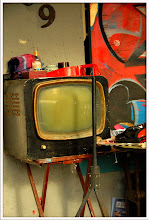

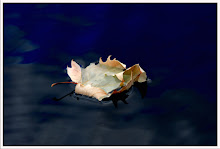
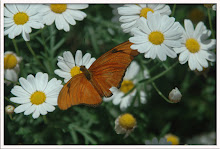
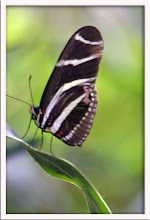

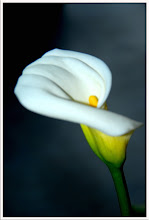


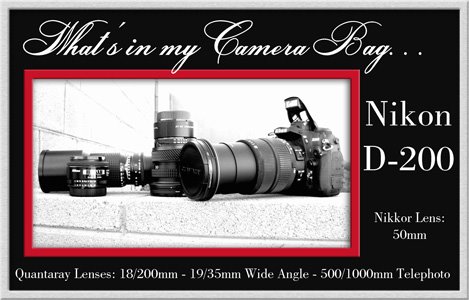
No comments:
Post a Comment